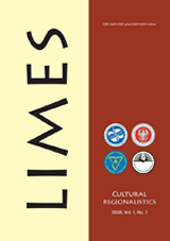Borders Between Europe and China: Why Do Europeans (Mis) Understand Chinese Culture?
Borders Between Europe and China: Why Do Europeans (Mis) Understand Chinese Culture?
Author(s): Agnieška JuzefovičSubject(s): Philosophy
Published by: Vilnius Gediminas Technical University
Keywords: Chinese culture; otherness; inter-civilization dialogue; problems of understanding; landscape aesthetics.
Summary/Abstract: The article goes deeper into the dialogue of inter-cultural Chinese and Western civilizations. It is analyzed how the Westerners perceive Chinese civilization and culture. The methods used here are the comparative and hermeneutical ones, as it is aimed to compare two different cultures and to penetrate the problems of understanding. The problems of understanding are not new, they have been analyzed a lot. The novelty of this article is determined by the fact that these problems are investigated in the outlooks of the understanding of Chinese culture and, especially, landscape aesthetics. Thus, the objects of this research are an inter-civilization dialogue and an inter-civilization conflict. The author of this article discusses why often it is difficult to develop a meaningful cultural dialogue between China and Europe, why this dialogue is relevant and how it could help Europeans to understand the Other and themselves. The idea presented in the article is that the Westerners are often mislead by a Chinese traditionalism, which is ambivalent and closely related to creativity and constant change, thus it should not be identified with stagnation and dogmatism. One more aspect of Chinese culture, which Europeans find difficult to understand, is its unity, which has deep philosophical implications and ability to connect the opposites. The author assumes that Western-Eastern Europe has many distinctive features, but the inhabitants of this region view classical Chinese culture and an art in a similar way as the inhabitants of the rest of Europe: all Europeans have similar stereotypes and difficulties to understand separate aspects. This allows us to speak about a common European approach.
Journal: LIMES: Cultural Regionalistics
- Issue Year: 2009
- Issue No: 1
- Page Range: 48-56
- Page Count: 9
- Language: English

